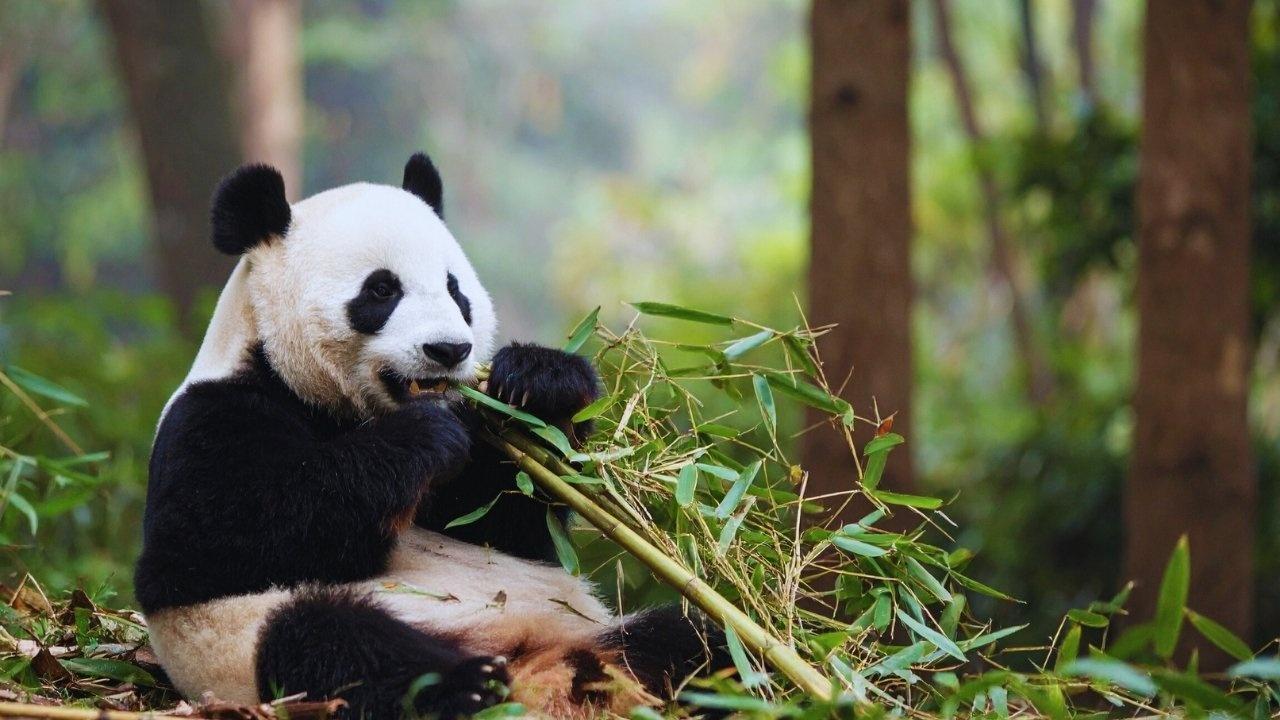
Post by : Samir Qureshi
India hosts some of the planet’s most diverse ecosystems, from forests and wetlands to deserts and highlands. The country supports tigers, elephants, rhinos and countless other species, yet faces pressures from poaching, habitat loss, climate impacts and human expansion. Traditional methods—patrols, camera traps and manual counts—remain useful but are often resource-heavy and limited in scale.
Artificial intelligence (AI) and machine learning (ML) are being adopted to augment conservation work. These technologies can process vast datasets, spot patterns, forecast risks and support decision-making. By applying AI-driven tools, Indian conservation agencies and researchers are shifting toward more data-led strategies to protect biodiversity.
Camera traps and drone footage analysed with AI can identify animals automatically. Machine learning models classify species from images and video, and can even recognise individual animals using unique markings like stripes or spots.
These systems deliver more frequent and accurate population estimates, help track endangered animals and reveal movement patterns without disturbing habitats. Compared with manual surveys, AI systems provide near-real-time data to inform conservation actions.
Poaching continues to threaten India’s wildlife, especially tigers, elephants and rhinos. AI is used to detect poaching risk by examining factors such as human presence, past incidents and environmental variables.
Predictive models highlight high-risk areas so patrols can be allocated efficiently. AI also helps monitor illegal wildlife trade online by scanning marketplaces, social platforms and forums for suspicious listings and activity.
ML tools analyse satellite images and remote-sensing inputs to detect changes in habitats over time. These systems reveal deforestation, fragmentation and the effects of urban growth or climate shifts on ecosystems.
With this information, conservation planners can design wildlife corridors, prioritise reforestation, and target restoration efforts. AI helps identify regions that most urgently require protection and investment.
Conflicts such as crop damage by elephants or livestock losses to predators affect both communities and wildlife. AI-based forecasting uses movement data, environmental cues and incident history to predict conflict hotspots.
Authorities and local residents can receive alerts that enable preventive measures—early warning systems, targeted barriers or community outreach—to lower the frequency of such incidents.
Project Tiger and related programmes are applying AI to enhance monitoring. Camera-trap images are processed with ML to distinguish individual tigers by stripe patterns, estimate density and map movement corridors.
These methods improve anti-poaching responses and supply reliable data for management and policy decisions.
Drones and sensor networks equipped with AI track elephants and rhinos in parks and sanctuaries. The systems map migration paths, spot signs of injury or stress, and reveal habitat usage patterns.
In northeastern India, AI tools help anticipate poaching threats to rhinos and guide focused patrols.
AI is applied to aquatic environments as well. Underwater cameras processed with ML identify fish, turtles and other marine life, and can flag illegal fishing activities.
Wetland monitoring helps protect migratory bird habitats and assess pollution or climate-driven changes, enabling timely interventions.
Manual monitoring demands large teams and time. AI can rapidly analyse large datasets and extend coverage across wider areas, producing actionable intelligence more quickly—an important advantage in a country with varied and extensive habitats.
Although initial investments can be substantial, AI reduces recurring field costs by optimising patrols and automating data processing. Resources can then be focused where they have the most impact.
Machine learning delivers data-driven insights for policymakers and NGOs, improving choices about protected areas, corridors and anti-poaching tactics.
Predictive analytics can identify emerging threats—poaching, encroachment or conflict—before they escalate, enabling pre-emptive action that can save lives and habitats.
AI depends on quality input data. In remote locations, devices like cameras, drones and sensors face connectivity, maintenance and power issues that can undermine reliability.
Monitoring must balance wildlife protection with human privacy. Systems should avoid excessive surveillance of nearby communities and adhere to ethical standards.
Field staff and officials require training to operate AI tools effectively. Without adequate capacity building, these systems risk being underused or misinterpreted.
High upfront costs for drones, sensors and analytic platforms may limit rollout across all conservation sites without sustained funding.
Linking AI with IoT devices and autonomous drones can enable near-continuous monitoring of forests, corridors and water bodies, producing real-time alerts for rapid response.
Mobile tools powered by AI can involve local residents in conservation—alerts about nearby wildlife, reporting mechanisms for illegal activity, and platforms for community participation.
Sharing AI-generated data across regions and countries can strengthen strategies for migratory species and transboundary habitats. India’s experience offers transferable lessons for other biodiversity-rich nations.
AI can speed up ecological research by analysing behaviour, breeding, migration and species interactions, supporting better-informed conservation plans.
AI and machine learning are enhancing wildlife conservation in India by improving monitoring, forecasting threats and enabling targeted interventions. From tracking big mammals to surveying marine life, these tools support more efficient, evidence-led management and conflict reduction.
Challenges remain—cost, technical limits and the need for training and ethical safeguards—but combining technology with community involvement and policy backing can bolster long-term protection of India’s biodiversity.
Adopting AI thoughtfully, with robust partnerships between government, NGOs, researchers and communities, will be key to preserving India’s natural heritage for the future.
This piece is intended for informational purposes only and does not constitute professional advice. Consult qualified conservation experts or authorities on wildlife management, AI deployment and related policies.










Zohran Mamdani Elected New York City Mayor; Victory Celebration Features Bollywood Hit
Zohran Mamdani wins NYC mayoralty, the city's first Muslim and South Asian mayor; victory rally even

Nita Ambani Cheers India’s Women’s World Cup Triumph
Nita Ambani celebrated India’s Women’s World Cup win with grace and elegance, cheering proudly in st

Victoria Mboko Wins Montreal and Hong Kong Titles
Teen tennis star Victoria Mboko wins Montreal and Hong Kong titles, defeating Grand Slam champions a

Suns Defeat Spurs 130–118, Booker Leads with 28 Points
Devin Booker scored 28 points and 13 assists as the Phoenix Suns ended the San Antonio Spurs’ unbeat

Wolves Remove Coach Pereira After Poor Premier League Run
Wolverhampton have dismissed manager Vitor Pereira after failing to win any of their first ten Premi

Travis Head Leaves T20 Squad For Ashes Preparation
Australia’s Travis Head leaves T20 series against India to join Sheffield Shield for red-ball practi